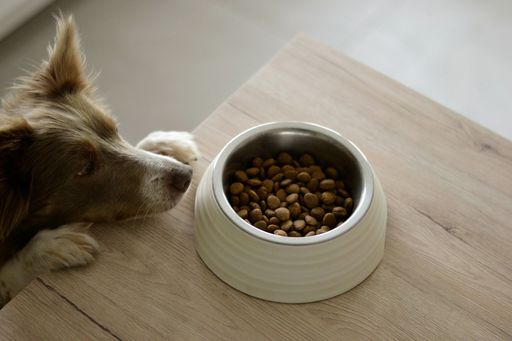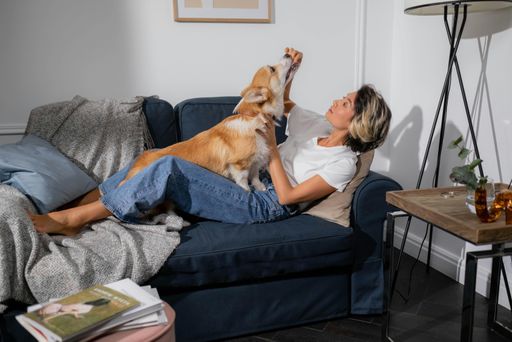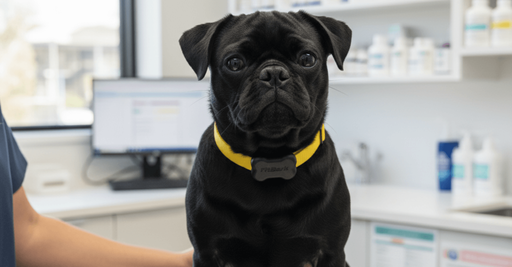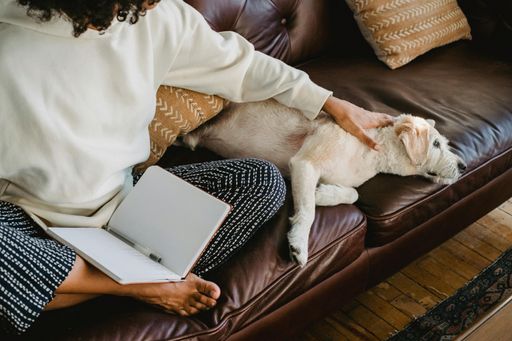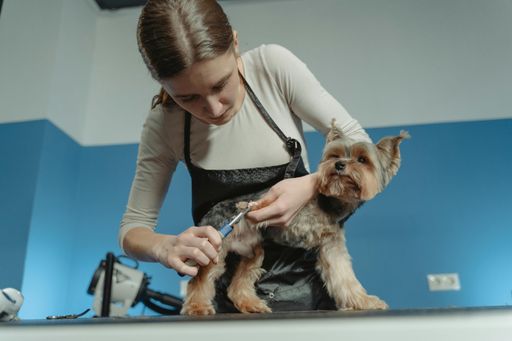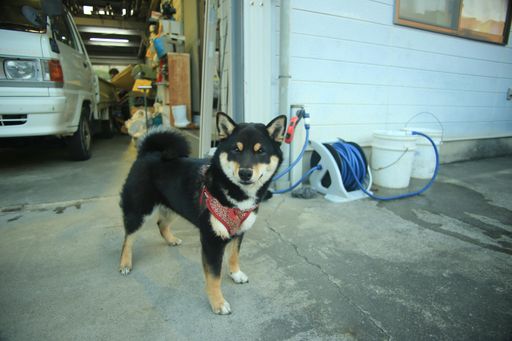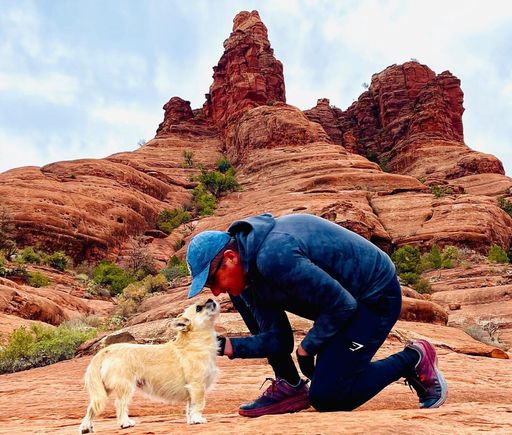Regular exercise is crucial for the long-term health of your dog. Walks, tug-of-war, and agility circuits will keep your pooch at a healthy weight, improve their mobility, and help them fight off some age-related conditions.
Exercising with your dog is a great way for you to stay in shape, too. Playing with a puppy does wonders for your mental health and long walks with mature dogs can improve your cardio.
Continuing to play and exercise with older dogs is also important. Modifying your route and picking soft play toys will stimulate your senior pet and help them stay young at heart. This is crucial, as many older dogs will develop arthritis and other age-related conditions.
The Importance of Exercise
Get ahead of illnesses and inactivity by exercising frequently with your dog. You can increase your motivation to play, walk, and work out with your dog by:
- Paying attention to your pooch’s mood. This will help you understand the connection between a healthy, well-conditioned pet and your dog’s overall happiness.
- Log your workouts together using apps that collect important data like steps and time spent moving. This will help you track your progress and build your fitness over time.
- Find friends who also have dogs to walk and play with. This will keep you accountable and increase your motivation to get outside.
- Set goals like step challenges and daily activity standards. As you’re aiming to exercise your dog the right amount, keep in mind that dogs need at least 30 minutes of aerobic activity daily.
Regularly exercising is great for your health, too. Walking a dog can help you stay fit and active regardless of your age. Aerobic activity does wonders for your cardiovascular system in later life and playing with your pooch can improve your balance and coordination. This is key, as experts recommend that folks between 50 and 70 get at least 150 minutes of exercise per week. Just remember to stay safe while exercising by adapting your workouts to suit your fitness level and staying properly hydrated throughout.
You will also need to modify your workouts based on your dog’s age and breed. This is crucial, as some small or older dogs will develop conditions like arthritis if they walk too far.
Young Dogs
Adopting a puppy in later life can be a great way to rediscover your passion for pets. Puppies are crazy, high-energy balls of fun that will get you moving and give you a clear sense of purpose. However, if you’re a little older yourself, you will need to take steps to increase your energy level for your pup like sleeping more and eating a balanced diet. This will give you the energy to engage in exercises and activities that young dogs love, like:
- Agility circuits
- Puzzle games like food dispensing toys
- Obedience training with commands like “heel,” “stay,” and “come”
- Tug-of-war with the command “drop it”
These activities are perfect for young puppies as they teach obedience and engage your young dog on multiple levels. Just be sure to avoid activities that require too much walking or jumping over high agility bars. Doing so may cause them discomfort later in life due to arthritis and joint injuries.
Remember that you don’t need to do all the training and play yourself. Instead, socialize your pup by taking them to doggy daycare or the park. This will help them learn how to act around strangers and will take some of the onus off you.
Mature Dogs
Well-trained dogs that have reached their prime are a joy to be around. They reward you for proper training as a puppy and have oodles of energy to play all day with. As an owner of a dog in its prime, consider activities like:
- Cycling: You can tether your pup to your bike, but should be careful to train them properly to avoid any accidents.
- Circuits: Trial a few circuits based on high-intensity interval training and strength training principles. Throw in a few stimulating ideas for your pooch, too, like fetch and agility runs.
- Running/Hiking: You don’t need to be a marathon runner to exercise your mature dog. Instead, take them on a breed-appropriate walk or find a walker who can tire them out on your behalf.
When exercising your pooch, be sure to choose breed-appropriate routes and exercise. Do not take small breeds on excessively long walks, as this may lead to muscle and joint wear that will affect them in later life.
If, on the other hand, you have an energetic large dog but can’t exercise regularly due to your own physical limitations, consider finding a trainer who can. Your mature friend deserves to run free and far while they are in their prime and a professional, trusted dog walker can provide the stimulation they need.
Older Dogs
Finding ways to exercise in later life is important for you and your dog. Adaptive exercise ideas will keep you healthy and help you both fight off age-related conditions like arthritis. Finding ways to stay active can be mentally stimulating, too, as you’ll both benefit from the dopamine release associated with pain-free play.
If you experience joint pain in your ankles or knees, consider opting for some low-impact exercise ideas, including:
- Yoga: Pet-adapted yoga can get your dog moving and help you stretch. They aren’t required to perform any moves but will love coming to yoga class with you.
- Swimming: Dog pools that provide hydrotherapy are a safe way to take the strain off your pooch’s joints and help them maintain a healthy weight. Just be aware that you likely won’t be able to swim with them due to hygiene concerns.
- Gentle Circuits: Older pooches probably won’t want to zoom around agility courses. However, they can still be coaxed into performing tricks and playing fetch. Incorporate these activities into a workout to ensure that you both work up a much-needed sweat.
These adaptive exercise ideas can minimize chronic pain and help you recover from things like hip replacements or ankle sprains. Just be sure to build in some play for your dog, too, as they’ll want to get involved in the fun.
If your pooch is a little more senior and experiences issues like arthritis or muscle wastage, you may need to invest in some harnesses that will support your dog’s back legs. This will help them walk a little further without putting additional strain on joints that are already inflamed or weak.
Conclusion
Exercising with your dog is a great way to work up a sweat and strengthen your bond with your canine pal. However, you may need to adapt your exercise regime as you and your dog start to age. Consider making some strategic changes to the way you work out to avoid joint pain while building your muscles and improving your cardiovascular abilities. This will help you stay active for longer and significantly enhance your pup’s quality of life.


